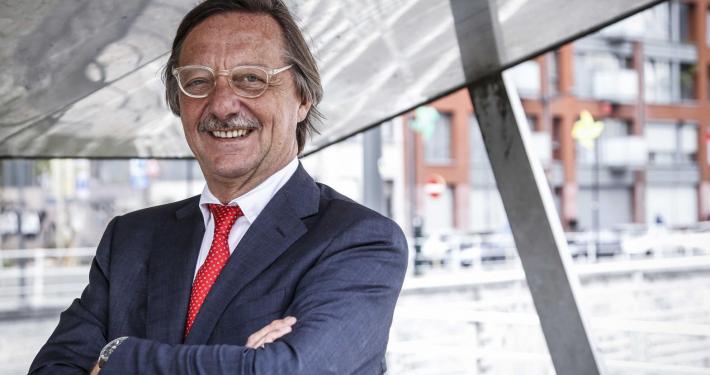
Photo: Alain-Flausch-UITP
Public transport at the heart of tomorrow’s urban mobility
12 April 2017
by Nick Michell
By Alain Flausch, UITP Secretary General (International Association of Public Transport)
Change is afoot in the world of transport. Cities around the world are experiencing rapid urbanisation, which is leading to greater demand for urban mobility. Daily urban trips worldwide are predicted to rise from 7.5 billion in 2005 to 11.5 billion in 2025. Our over-reliance on the private car is leading to congestion, poor air quality and a lack of urban space.
Despite this, younger generations are less interested in owning a car or even obtaining a driving licence than their parents and the emergence of new mobility solutions and players are helping to make car-free urban living a reality. With the help of a smartphone, users are now within just a few clicks of finding the right mobility option, and though still in its nascent stages, the autonomous vehicle is set to play a key role in the coming years.
Political winds are also evolving to reflect citizens’ concerns about air quality and health, meaning a gradual shift away from car-focused urban development to policies favouring active transport.
For cities with long-established infrastructure, increasing space for cars is simply not an option. On average, private cars are parked 95 percent of their lifetime and when they are driven, are much less space-efficient compared to public transport, walking and cycling.
UITP studies have shown that a broader mix of mobility services is the answer to ever more complex mobility needs. In cities with high-quality public transport, complemented with services such as car-sharing, bike-sharing, cycling infrastructure, shared taxi services and ride-sharing options, people can move around more easily.
This offers the convenience of a private car, without the negative externalities. Nevertheless, when a car is needed, car-based services can complement ‘traditional’ public transport as they offer the benefits of a car without the expense or hassle of ownership.
Public transport: A vital role in tomorrow’s cities
New mobility services such as ride selling apps (Uber, Lyft), free-floating car-sharing (car2go) or ridesharing apps (BlaBlaCar) can indeed play a significant role in cutting car dependency. According to studies by the University of California, Berkeley’s Transportation Sustainability Research Center, one shared car replaces 9 to 13 cars in North America as users either sold a vehicle or postponed a purchase since joining a car-sharing scheme.
In San Francisco, the home market of Uber and Lyft, combined they represent just 1 to 2 percent of all trips. This is precisely the point though: car usage decreases because car-sharing users walk, cycle and use and depend on public transport for most of their trips and use a car only when necessary.
Another important element is affordability. The pricing structure of car- and ride-sharing services offers access to a car when required, but it is not an affordable alternative for all mobility needs, hence affordable public transport is a necessary complement.
The same applies to walking and cycling. Access to public transport helps cyclists and pedestrians make longer, more complex trips and can provide convenient alternatives when encountering bad weather or difficult topography.
With urban space at such a premium, public transport is easily the most efficient in terms of capacity, particularly on major corridors and in peak hours. It is this vital ‘backbone’ role that it plays, in combination with new mobility services, that will help our cities become less car dependent.
With increasing urbanisation and the rise in demand for mobility, cities will need to plan carefully to maximise the use of urban space and to develop high- quality public transport that presents an attractive alternative to the private car. No one single solution exists, but the cities that outperform the rest of the pack in quality of life and economic growth will be those that place public transport at the core of planning, complemented by a host of new mobility services.
These topics will be discussed in depth at the upcoming UITP Global Public Transport Summit in Montreal (15-17 May 2017).
To fellow local and regional leaders I say: join us on this journey. We are just getting started.








